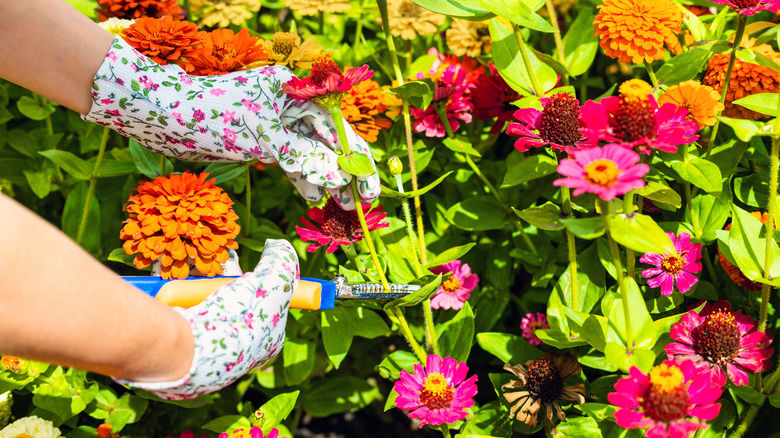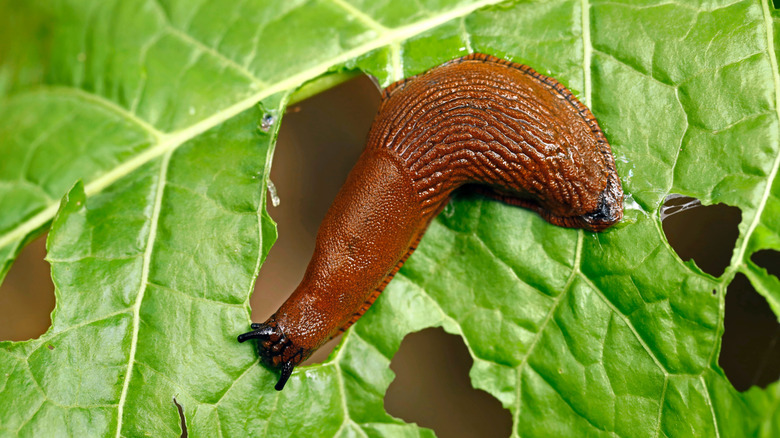The Old-School Trick That Keeps Your Zinnias Safe
Zinnias (Zinnia spp.) are among some of the most versatile flowering plants you can have in a home garden, and they grow as perennials in USDA hardiness zones 3 to 10. They're available in different colors, shapes, and sizes, and local pollinators appreciate their' flowers. Some zinnia cultivars are resistant to insects and environmental challenges, but overall, these plants are vulnerable to a number of pests. Before you bust out the chemical-laden pesticides, though, try a more traditional trick to keep the plants safe from damage. This strategy involves hand-picking pests from your zinnias, but it only works for certain pests and should be used in conjunction with an overall management plan.
If you're waking up in the morning to new holes in your zinnia leaves, chances are you're dealing with either slugs or earwigs. Slugs tend to crop up and feast on zinnia foliage throughout the spring and summer months at nighttime, leaving irregular-shaped holes in their wake. Earwigs are the other type of pests who eat zinnia leaves and flowers at night. These pests are active throughout the summer and fall, and they likewise leave irregular-shaped holes in these plants. Experts suggest that slugs and earwigs can be dealt with simple hand removal. While employing this old-school control method, be sure to also keep an eye out for other common zinnia problems.
Tips and considerations for hand-picking pests from zinnias
Growing and caring for zinnias involves occasional pest management. Before hand-picking slugs and earwigs from your zinnias, know that this task is best accomplished after dusk, as these pests tend to be primarily active at night. Wear a pair of gloves to protect your hands and grab either a flashlight or use the light on your smartphone so you can see the plant as you manually pick off the pests one by one. Be sure to look underneath the leaves, too. You can also bring a mason jar or a cup with soapy water to place the pests in. The idea here is to remove and kill the unwelcome guests quickly without resorting to chemical sprays.
That said, hand-picking pests from zinnias isn't a cure-all solution. You may need to repeat the process several nights in a row to fully address the problem, but it's also important to continue monitoring your plants for any new signs of infestation. Also, look out for signs of other pests known to target zinnias, including spider mites, aphids, and white flies. You can get rid of these insects by spraying them off with a garden hose, or by applying an insecticidal soap at night to prevent harm to daytime pollinators. Yet another option is to use a companion plants to keep garden pests away from zinnias.

